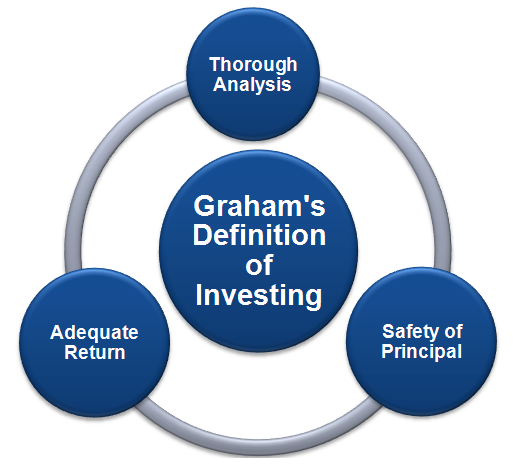Hey friends,
It may be just me and my circle of friends, but increasing I am seeing more and more people participate in the stock market. And most of which will then call themselves an investor. To put it bluntly, it doesn’t mean that once you are “vested in” the stock market, you are an “Investor”. For all you know, it may be a gamble or a speculator.
Recently, from my mentor, Safal Niveshak, whom I am learning from in his mastermind group, he shared that Benjamin Graham clearly differentiated investing from speculating in his books, first in Security Analysis and then laid focus on in The Intelligent Investor.
He wrote, “An investment operation is one which, upon thorough analysis promises safety of principal and an adequate return. Operations not meeting these requirements are speculative.”
Here is a diagram he provided to summarise the insights:

You can see that there are 3 key components:
1. Thorough Analysis: How do we do a Through Analysis of business? What is the conclusion we are seeking when analyzing a business? In my opinion, we are always seeking to ascertain the potential future profits of a business when it comes to investing. And how we determine the “Future”, is to base it on facts of “current” (such as current assets, current business model, current management, current cash, current debts etc) and facts of the “past” (past income growth, past efficiency and profitability, past trend in margin and turnover).
We can get pretty much of these info from the annual reports and scuttle butting businesses that are within our circle of competence.
2. Adequate Returns: After we analyse the business, we come to putting a price to to the investments. This is the portion we determine and ask for adequate returns and see if there is opportunity to getting businesses at a bargain price or at a good value.
3. Safety Principle: Finally, a margin of safety must be accounted for in our analysis as well as our pricing of the business. After all, there are uncertainty involved when it comes to assessing the future profits of any businesses. So a buffer for the investment can further protect our returns. Another safety principle is to have portfolio management.
Here are some nuggets of wisdom from the father of value investing coupled with my personal contextualizing of the principles. I look forwar to hearing for you and your comments.
Click HERE and join me for a Free Investing Workshop.
Mind Kinesis Research Team


